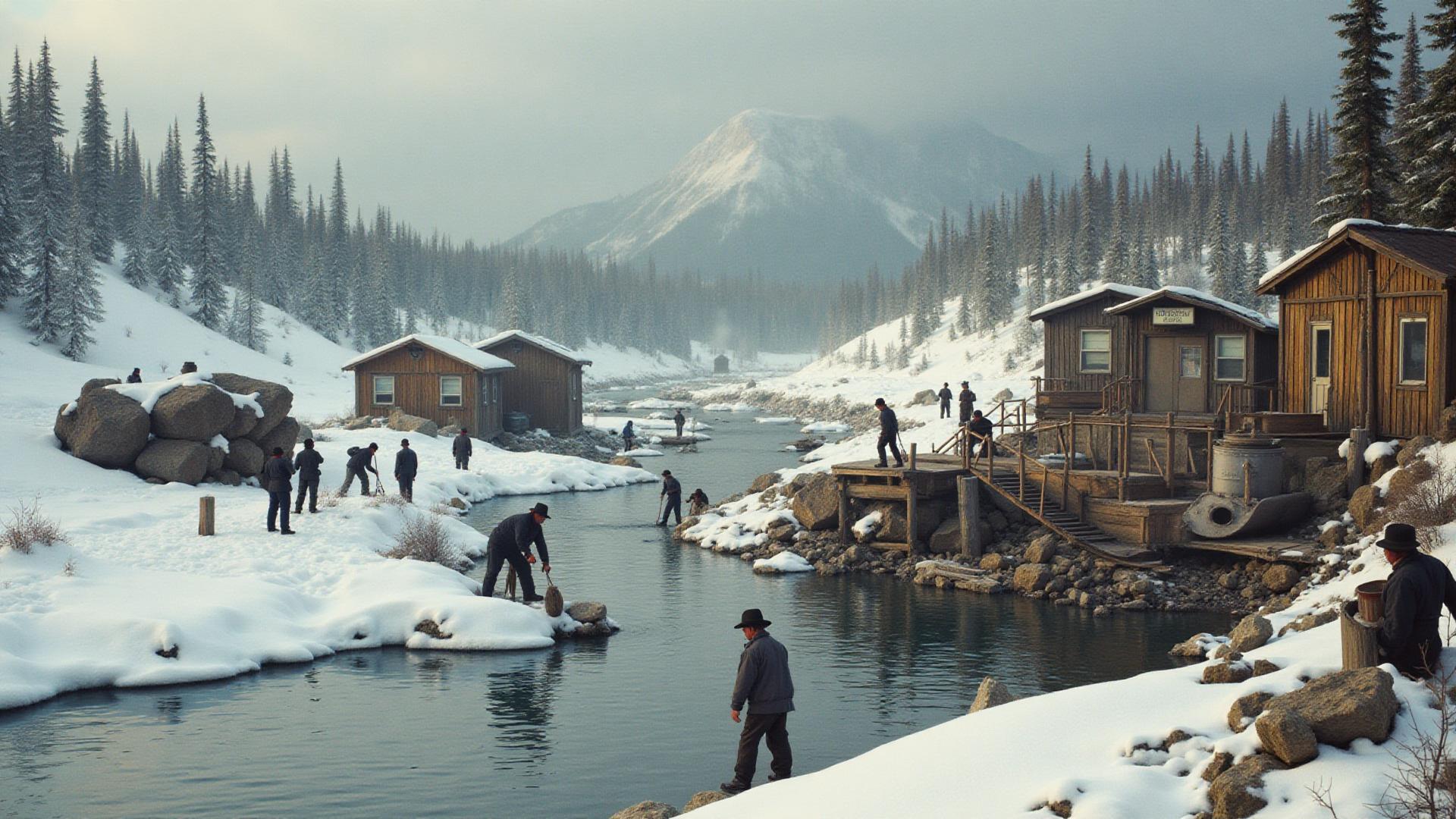How Gold Mining Worked in the Klondike Era
From frozen muck to pay streaks: the mechanics of Klondike placer mining

Placer Gold Deposits
In the Klondike, most gold was placer—flakes and nuggets eroded from lodes and concentrated in creek gravels. Early stampeders worked surface gravels with pans, rockers, and sluice boxes; once easy pickings thinned, miners cut shafts through permafrost to reach ancient creek beds (pay streaks).
Fighting the Freeze
Miners "fired" frozen ground with wood or used steam points to thaw, then hoisted gravels for washing through sluices where riffles trapped heavy gold. This brutal work in subzero temperatures defined the Klondike experience.
The Industrial Shift
By 1899–1910 the region shifted toward industrial scale: hydraulic monitors washed entire hillsides and, crucially, bucket-line dredges worked valley bottoms. Dredges floated in their own ponds, digging, screening, and sluicing continuously—one dredge could replace thousands of hand miners.
Dredge No. 4 on Bonanza/Hunker symbolizes this era and is preserved today as a National Historic Site, a towering monument to industrial-scale placer mining.